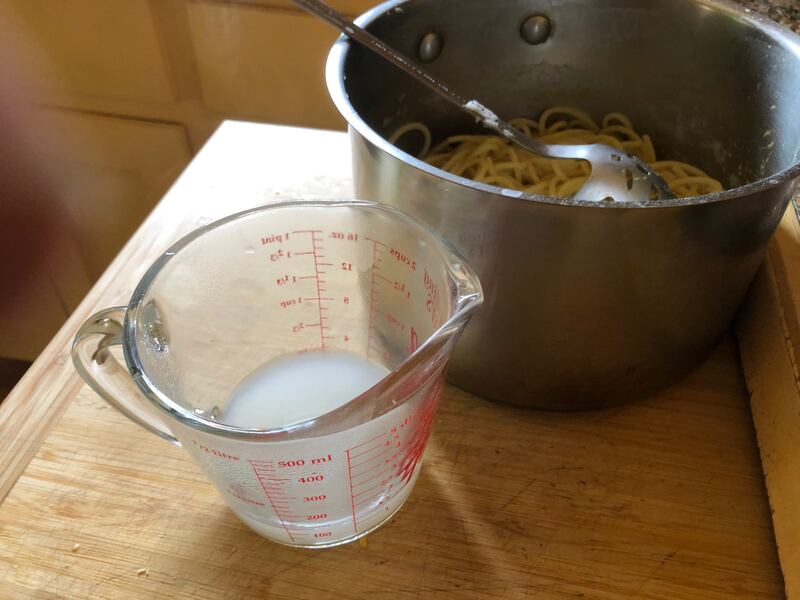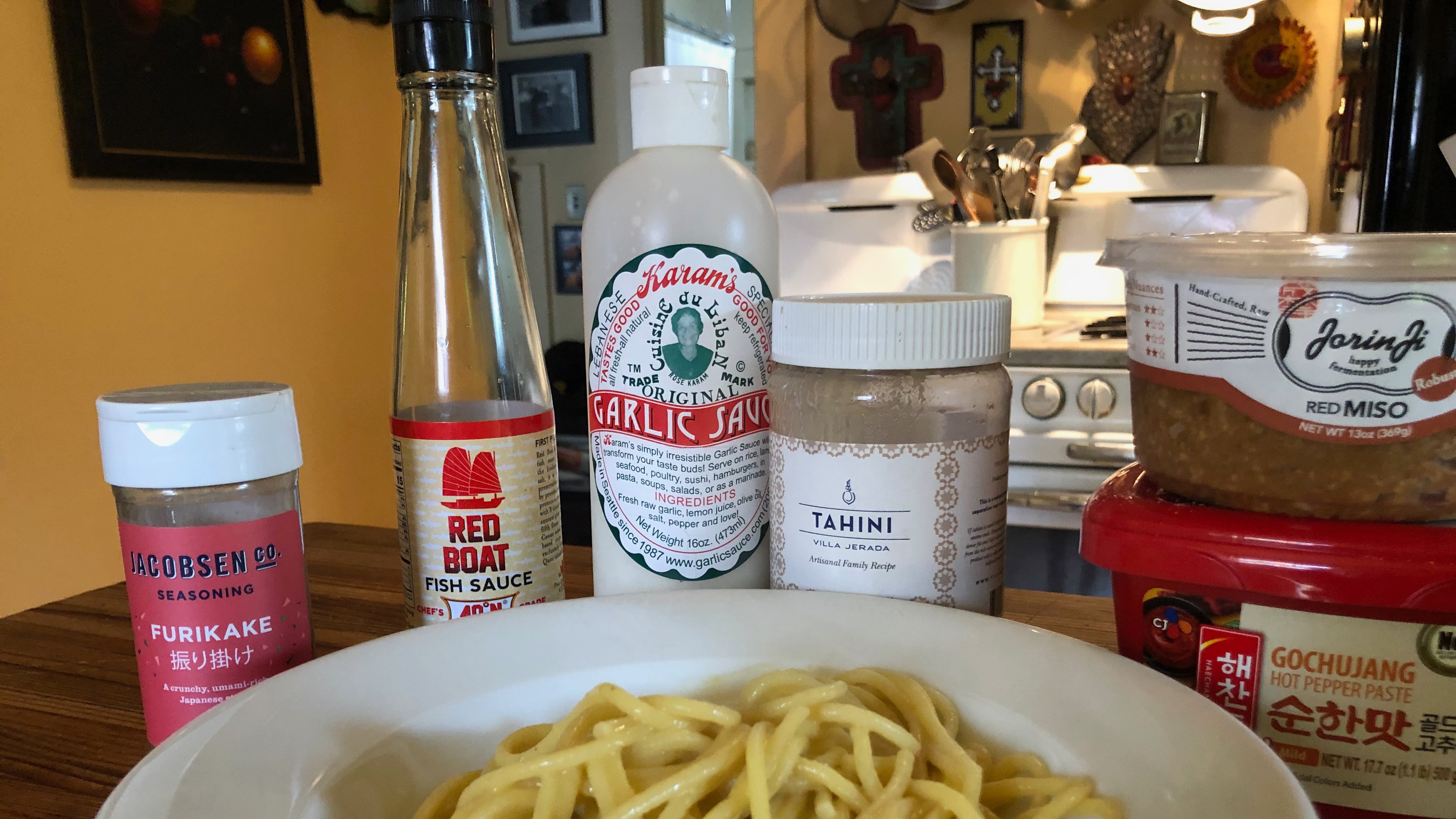Jim Dixon wrote about food for WW for more than 20 years, but these days most of his time is spent at his olive oil-focused specialty food business Wellspent Market. Jim’s always loved to eat, and he encourages his customers to cook by sending them recipes every week through his newsletter. We’re happy to have him back creating some special dishes just for WW readers.
Nutritional yeast is having a moment. Again.
Portlander Tove Danovich wrote about the history of yeast as a nutritional powerhouse, beginning more than 100 years ago when vitamins were discovered. Like most of the claims for so-called superfoods, those for yeast were often lubricated with snake oil. But the mustard yellow flakes—also known as brewer’s yeast since they’re made from Saccharomyces cerevisiae, the yeast used by beermakers for centuries—do deliver a nice hit of protein and B vitamins. But the best argument for what the kids are calling nooch is that it tastes great.
Nooch is familiar to most as a cheesy-flavored topping for popcorn, and independent theaters like Cinema 21 and Hollywood wisely provide shakers for dressing the buttery tubs moviegoers love. Back when I was a young hippy parent, my wife and I made a sauce for broccoli from the vegetarian cookbook Laurel’s Kitchen by mixing roughly equal parts melted butter and olive oil with nooch, and our boys loved it.
But I started to expand my nooch use after reading this story about Lake Garda chef Riccardo Camanini. He made a simple spaghetti sauce with just butter and yeast, and his customers, as well as high-profile chefs like Alain Ducasse, loved it. And while the pasta-butter-nooch combo is pretty great, it’s even better as a platform for experimenting with other flavors. Add freshly ground black pepper, substitute extra-virgin olive oil for the butter, and you’ve got a no-dairy cacio e pepe. A few splashes of fish sauce and a lot of garlic, and it’s a reasonable facsimile of the San Francisco-Vietnamese mashup called garlic noodles. Tahini, gochujang, miso, or herby spice blends like furikake or za’atar can take the pasta anywhere you want to go.
And while the ingredients might make your Nonna angry, a bowl of pasta with a very simple sauce or even just olive oil and salt is very Italian. The noodles get the attention they deserve, so it’s important to use good dried pasta made from just durum wheat and salt. Look for pasta with a slightly rough surface, the result of being extruded through brass instead of the teflon used by the industrial noodle makers. The best are usually Italian, but Rallenti Pasta made right here in Portland is very good.
Technique is important for this approach. Cook the pasta—and I like long pasta, but any shape works—in plenty of salted water and start tasting it a couple of minutes before the cooking time on the package. You’ll taste and feel the raw noodle in the center, and your goal is to stop cooking as soon as that is gone, which may be another minute or two past the dictated time.
Save at least a cup of the starchy cooking water, then add the olive oil to the hot noodles right away and toss vigorously, adding some of the water until you get a creamy emulsion (you probably won’t need it all). Stir in the nooch and whatever else you like, but use restraint. You don’t need much, and you want to end up with pasta that’s coated in the sauce but not drowning in it.
While pasta purists insist that it must be eaten immediately, I often make a batch with just the nooch, store most of it in the fridge, and heat a bowlful at a time in the microwave so I can play around with other add-ins.

Pasta With Nooch
A pound of pasta serves 4 as a main course; cut the recipe in half for more Italian-like first course servings.
1 pound spaghetti
1/4 cup extra virgin olive oil
3 tablespoons nutritional yeast
4 quarts water
3 tablespoons kosher salt
Bring the water to a vigorous boil, add salt, then add pasta. Cook, stirring occasionally, until the taste and feel of uncooked pasta is gone.
Drain, reserving at least a cup of the cooking water.
Add olive oil and 1/4 cup of the reserved water and stir vigorously. Add more water, 1/4 cup at a time, until the sauce looks like heavy cream.
Add nutritional yeast and stir well. Stir in additional ingredients as desired.

